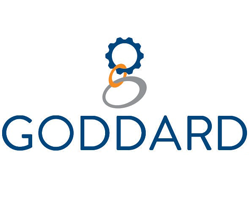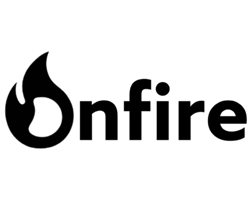
Achieving Connection and Accountability in a Hybrid Work World
December 09, 2021
Case categories include: Culture Founder’s Insights Health Leadership Trends
The Alliance of Chief Executives brings leaders together from around the globe, creating "safe" environments where they can discuss their most sensitive, strategic challenges. This is especially crucial in today’s world, as the means of human connection are in flux, and leaders, like many of their employees, are navigating new challenges and opportunities that come along with a changing world.
In fact, since March 2020 Alliance leaders have participated in a CEO survey to measure how businesses are experiencing the COVID-19 crisis – to gauge the depth of impact, the latest business trends, and the progress of returning employees to their workplaces. You can review these survey results and track fluctuations here.
During a recent Alliance group meeting, the topic of conversation turned to the emerging work paradigm as the pandemic grinds on and – hopefully – resolves itself in due time. Business leaders have been grappling with the decision to remain fully remote, return to the office, or explore the option of finding balance with a hybrid plan. Every business has different needs to consider and a robust conversation ensued among the executives regarding how to navigate this new chapter of the working world. With permission from the following Alliance members, here are some of their shared insights:

The discussion was kicked off by Anne Bisagno, President of Xantrion, who sought feedback on the uniquely-tailored hybrid strategy that she continues to evolve to meet the ebbs and flows of both her company’s and her employees’ needs.
Bisagno described that her long term goal is to keep the current flexibility to work from home for employees in applicable roles, while maintaining accountability. She explained that accountability is the key to trust, which has been the cornerstone of Xantrion’s company culture and their secret to success. She shared to the gathered Alliance members that, in her experience, the best mechanism for building and maintaining trust is close communication and collaboration. To achieve this, her strategy dictates frequent virtual meetings for the entire organization and periodic in-person meetings for managers and other leaders. She explained that regular in-person social experiences foster accountability and connection, two things she feels can’t be replaced entirely virtually for many roles.

Alliance member Tootie Tatum, CEO of Blackhawk Genomics, shared what she’s learned from her own experience of leading her company through the challenges brought by the pandemic. Tatum warned against cancelling check-in calls with direct reports out of a perceived “no need” to meet. She stressed that for her company, check-ins that are both frequent and meaningful have been vital in keeping everyone engaged.

For Alliance member Rob Chamberlin, Managing Partner of Security 101, in-person work is indispensable, as his company provides on-site security system installations for its clients. He described how Security 101 is seeing their clients' needs develop to mold the emerging employer requirements of the pandemic. Although clients have been adjusting their maximum occupancy and physical distancing requirements in their offices, Chamberlin considers the changing norms as opportunities for his company to design and deliver new systems to their clients.
Bisagno explained that having one in-person event every year for the entire company has been something she looks forward to the most. It’s important to her that everyone at the company has at least one invitation to an in-person event every year. Xantrion is a team, and she wants everyone to feel included and connected. As Chamberlin’s organization is mostly in-person, he described a buddy system method of further deepening connections at work and keeping employees – especially new hires – engaged and thriving: they pair all new employees with a more senior member who is not their direct manager to answer questions and show them the ropes.
Bisagno described how mental health checks for work-from-home employees have been an additional key to maintaining strong levels of engagement. Tatum explained how she gives managers a check-in toolkit to meaningfully start the conversation with their teams. She explained that CEOs can’t assume that managers naturally have their own tools to tap into their direct reports’ well-being. Tatum claimed that another benefit of having a check-in toolkit for managers is that it combats attrition: if a manager can connect with a struggling employee in the early stages, they can oftentimes resolve problems before an employee calls it quits.
A point of agreement within the group’s discussion was that one of the biggest, yet often overlooked, differences of virtual work is the fact that employee’s work stations are not the same at home as they are in the office. Bisagno seeks to solve this problem and maximize employee productivity by ensuring that every employee has functional, ergonomic equipment to work comfortably at home. She stressed that with a hybrid working model, she can’t cut corners on the tools that make her employees comfortable and effective at their desks.
The discussion continued with many Alliance members highlighting what they experience as the “silver lining” of retention and recruiting benefits of a hybrid working model, including the ability to hire outside of the company’s traditional labor market and the ability to retain employees that need to stay home or even move away. For Bisagno, Xantrion was once a regional company, but now they have employees all over the United States. As a once-regional technology company, they have now been able to expand their client base internationally as expectations in business relationships have shifted due to the pandemic.
As the conversation closed out, Tatum explained that CEOs often lack an outlet to speak candidly on their unique challenges with those who are in similar positions. The gathered executives agreed that their connection through the Alliance has served as a reminder that, while the pandemic has brought about many challenges and lots of change, there is much opportunity to be found.
About
The Alliance of Chief Executives is an active community of business leaders that focuses on deep strategic exchanges, challenging existing assumptions and generating fresh ideas.
Contact Us
Alliance of Chief Executives, LLC
2175 N. California Blvd.,
Suite 605
Walnut Creek, CA 94596
- 925-942-2400 Office
- 925-956-4424 Fax
- Email: info@allianceofCEOs.com
Newsletter
Subscribe to our newsletter and stay up to date with the latest Alliance news!












































